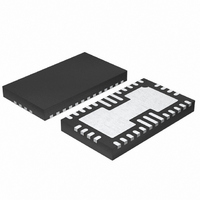LT6604CUFF-10#PBF Linear Technology, LT6604CUFF-10#PBF Datasheet - Page 13

LT6604CUFF-10#PBF
Manufacturer Part Number
LT6604CUFF-10#PBF
Description
IC AMP DIFF LN DUAL 34-QFN
Manufacturer
Linear Technology
Datasheet
1.LT6604IUFF-10PBF.pdf
(16 pages)
Specifications of LT6604CUFF-10#PBF
Amplifier Type
Differential
Number Of Circuits
2
Output Type
Differential
Current - Input Bias
40µA
Voltage - Input Offset
8000µV
Current - Supply
36mA
Voltage - Supply, Single/dual (±)
3 V ~ 11 V, ±1.5 V ~ 5.5 V
Operating Temperature
0°C ~ 70°C
Mounting Type
Surface Mount
Package / Case
34-QFN
No. Of Amplifiers
2
Input Offset Voltage
35mV
Bandwidth
10MHz
Supply Voltage Range
3V To 11V
Supply Current
36mA
Amplifier Case Style
QFN
No. Of Pins
34
Rohs Compliant
Yes
Lead Free Status / RoHS Status
Lead free / RoHS Compliant
Current - Output / Channel
-
-3db Bandwidth
-
Slew Rate
-
Gain Bandwidth Product
-
Available stocks
Company
Part Number
Manufacturer
Quantity
Price
APPLICATIONS INFORMATION
Figure 8 is plot of the noise spectral density as a function
of frequency for an LT6604-10 channel with R
using the fi xture of Figure 7 (the instrument noise has been
subtracted from the results). The noise at each output is
comprised of a differential component and a common
mode component. Using a transformer or combiner to
convert the differential outputs to single-ended signal
rejects the common mode noise and gives a true measure
of the S/N achievable in the system. Conversely, if each
output is measured individually and the noise power added
together, the resulting calculated noise level will be higher
than the true differential noise.
Power Dissipation
The LT6604-10 amplifi ers combine high speed with large
signal currents in a small package. There is a need to en-
sure that the die’s junction temperature does not exceed
150°C. The LT6604-10 has an exposed pad (pin 35) which
is connected to the lower supply (V
to a ground plane helps to dissipate the heat generated
by the chip. Metal trace and plated through-holes can be
used to spread the heat generated by the device to the
backside of the PC board.
Junction temperature, T
temperature, T
dissipation is the product of supply voltage, V
V
IN
R
R
A
IN
IN
, and power dissipation, P
34
4
6
2
1/2
LT6604-10
–
+
–2.5V
25
2.5V
7
+
–
J
0.1μF
0.1μF
, is calculated from the ambient
27
29
Figure 7
25Ω
25Ω
–
). Connecting the pad
COILCRAFT
TTWB-1010
1:1
D
. The power
SPECTRUM
ANALYZER
IN
INPUT
= 402Ω
660410 F07
50Ω
S
, and
supply current, I
is given by:
where the supply current, I
load impedance, temperature and common mode volt-
ages.
For a given supply voltage, the worst-case power dis-
sipation occurs when the differential input signal is
maximum, the common mode currents are maximum (see
the Applications Information section regarding Common
Mode DC Currents), the load impedance is small and
the ambient temperature is maximum. To compute the
junction temperature, measure the supply current under
these worst-case conditions, use 34°C/W as the package
thermal resistance, then apply the equation for T
example, using the circuit in Figure 3 with DC differential
input voltage of 250mV, a differential output voltage of 1V,
no load resistance and an ambient temperature of 85°C,
the supply current (current into V
channel. The resulting junction temperature is:
The thermal resistance can be affected by the amount of
copper on the PCB that is connected to V
resistance of the circuit can increase if the exposed pad
is not connected to a large ground plane with a number
of vias.
T
T
J
J
= T
= T
A
A
+ (P
+ (P
35
30
25
20
15
10
5
0
0.1
D
SPECTRAL DENSITY
D
• θ
• θ
S
. Therefore, the junction temperature
JA
INTEGRATED
JA
) = 85 + (5 • 2 • 0.0489 • 34) = 102°C.
) = T
FREQUENCY (MHz)
1.0
NOISE
A
Figure 8
S
+ (V
, is a function of signal level,
S
10
+
) measures 48.9mA per
• I
S
LT6604-10
• θ
660410 F08
JA
100
–
)
. The thermal
140
120
100
80
60
40
20
0
13
J
660410fb
. For











